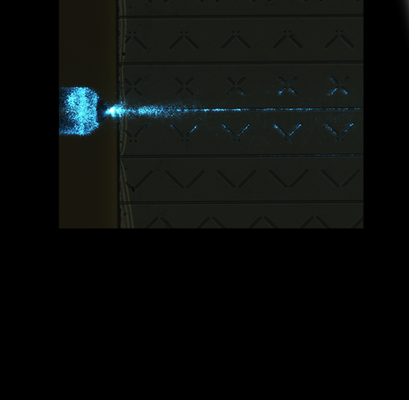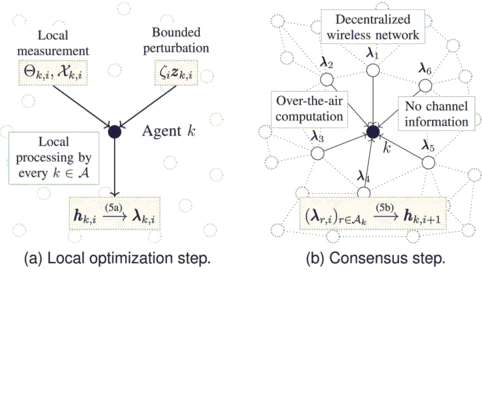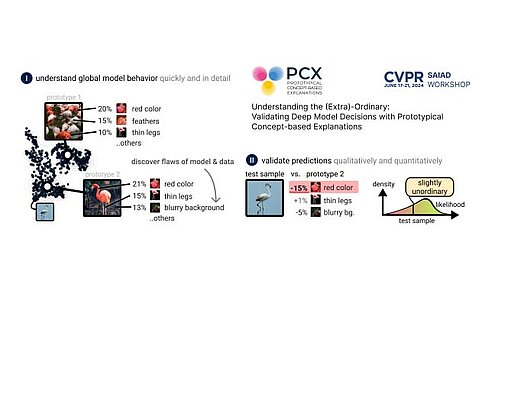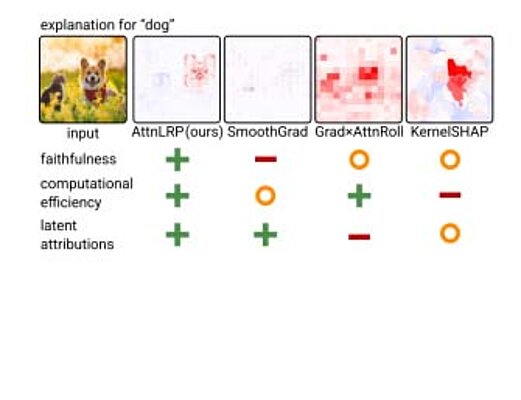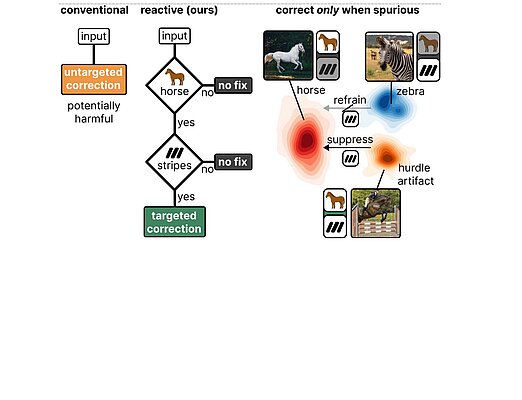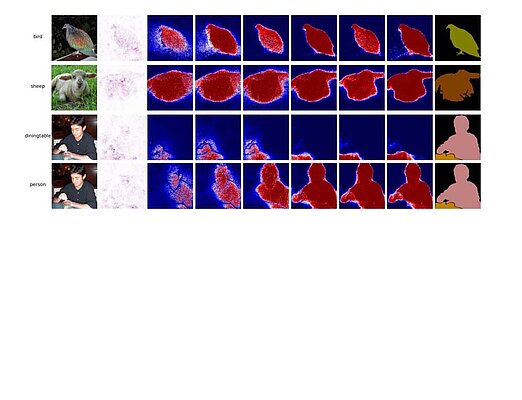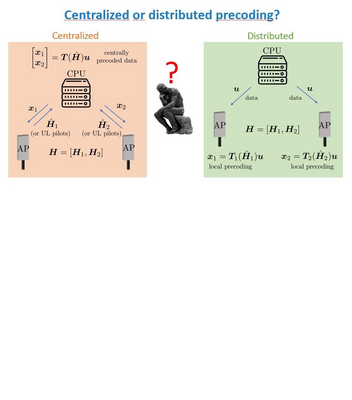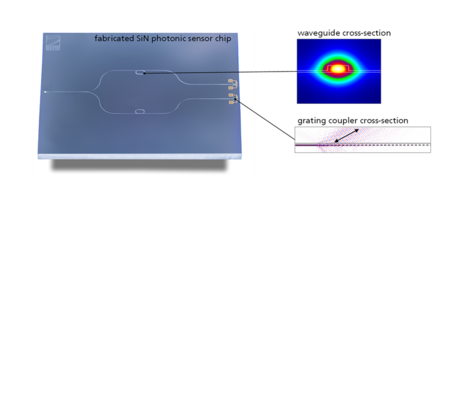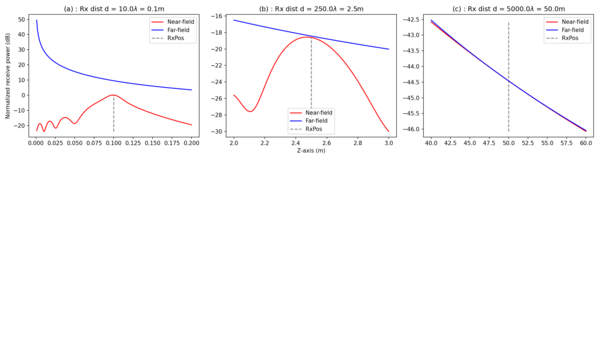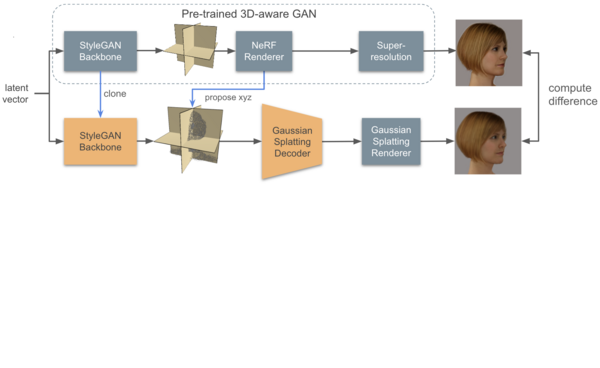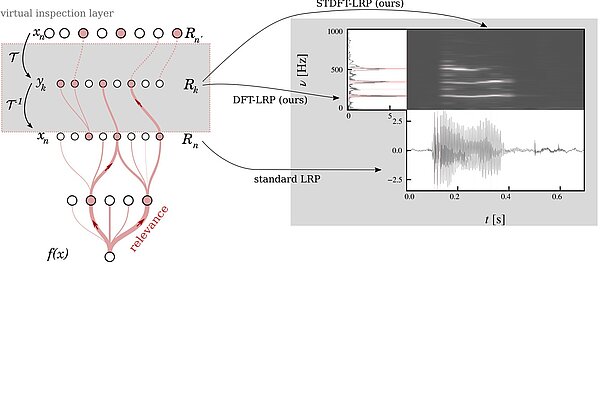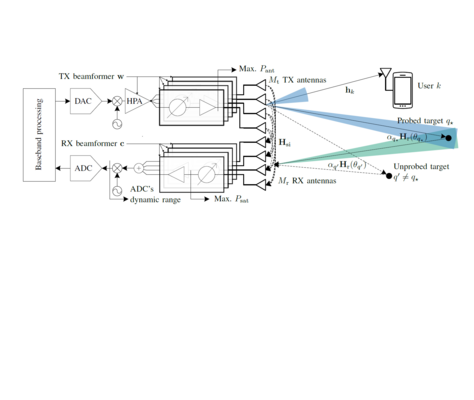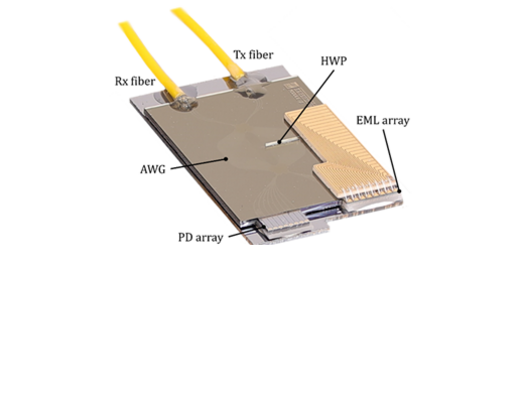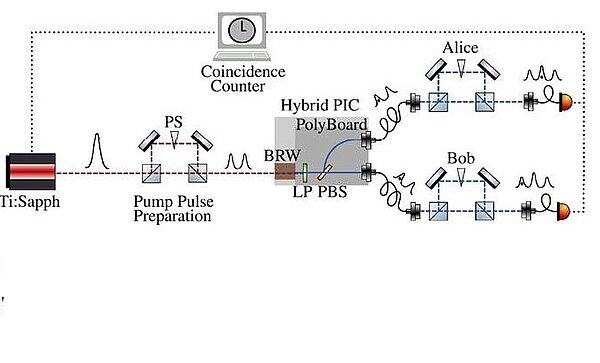First Polymer-based Passive Optical Waveguide for the Visible Range from 633 nm down to 488 nm
We investigated the transmission properties of optical waveguide based on fluorinated acrylate polymer and Ormocer® based polymer in the visible range (VIS). Laser transmission-induced transparency (LTIT) and fluorescence were observed in the...
Neuromorphic Wireless Device-Edge Co-Inference via the Directed Information Bottleneck
We consider neuromorphic wireless device-edge co-inference for edge intelligence applications. The directed information bottleneck principle is applied to extract the most relevant information for the task. The model demonstrates superior...
Distributed Convex Optimization “Over-the-Air” in Dynamic Environments
The paper proposes a class of distributed algorithms where the consensus step is implemented in a scalable and truly decentralized fashion using a novel communication protocol based on the “over-the-air” function computation (OTA-C)...
Understanding the (Extra-)Ordinary: Validating Deep Model Decisions with Prototypical Concept-based Explanations
With PCX, we introduce a method that summarizes similar single explanations via prototypical ones. As such, we can understand the whole model behavior quickly and in detail. PCX further allows to validate individual predictions by communicating...
AttnLRP: Attention-Aware Layer-wise Relevance Propagation for Transformers
Our new method, AttnLRP, is the first to faithfully and holistically attribute not only input but also latent representations of transformer models with the computational efficiency similar to a single backward pass. We demonstrate that our...
Reactive Model Correction: Mitigating Harm to Task-Relevant Features via Conditional Bias Suppression
DNNs are prone to relying on spurious correlations in data, posing risks in critical applications. Post-hoc methods exist to mitigate this without retraining but can globally shift latent features distributions, harming model performance. We...
Model guidance via explanations turns image classifiers into segmentation models
Heatmaps generated on inputs of image classification networks via explainable AI methods have been observed to resemble segmentations of input images in many cases. We apply the "Right for the Right Reason" paradigm of imposing additional losses...
PURE: Turning Polysemantic Neurons Into Pure Features by Identifying Relevant Circuits
Neurons in deep neural networks can act polysemantically, meaning that they encode for multiple (unrelated) features. As such, understanding the inner workings of machine learning models becomes more difficult. We present PURE to turn...
Explainable Concept Mappings of MRI: Revealing the Mechanisms Underlying Deep Learning-Based Brain Disease Classification
While recent studies show high accuracy in the classification of Alzheimer's disease using deep neural networks, the underlying learned concepts have not been investigated. We separated Alzheimer's patients (n=117) from normal controls (n=219) by...
Unlocking the Potential of Local CSI in Cell-Free Networks with Channel Aging and Fronthaul Delays
Centralized or distributed precoding? This is perhaps the most heated debate in the Cell-free Massive MIMO literature. However, in this work we argue that the best option may actually be a mix of the two. The reason is that centralized precoding,...
Spot Size Converters for Enhanced Coupling Efficiency Between Single Mode Fibers and High-Confinement Si3N4 Waveguides
For highly loss-sensitive applications of photonic integrated circuits (PICs), efficient coupling of high-confinement silicon nitride (Si3N4) passive waveguides with active optoelectronic components and standard single mode fibers (SMF) is...
Si3N4 Microring-Resonator-Based Integrated Photonic Sensor for Enhanced Label-Free Biofluid Analysis in the 850 nm Optical Band
We present an innovative integrated photonic sensor for point-of-care applications using silicon nitride (Si3N4) tailored for biofluids analysis in the 850nm optical band. With microring resonators (MRR) we detect smallest changes in the...
Towards Bridging the Gap between Near and Far-Field Characterizations of the Wireless Channel
Exploring near-field propagation is vital for 6G technologies like intelligent reflecting surfaces (IRS). Unlike far-field models, near-field models offer accuracy critical for applications such as beamforming and multiple-access, enhancing...
Gaussian Splatting Decoder for 3D-aware Generative Adversarial Networks
We present a novel approach that combines the high rendering quality of NeRF-based 3D-aware GANs with the flexibility and computational advantages of 3DGS. By training a decoder that maps implicit NeRF representations to explicit 3D Gaussian...
Wavelength Tunable, Polymer-Based Arrayed Waveguide Gratings for Hybrid Integration
We present a hybrid integrated photonic circuit with tunable arrayed waveguide gratings (AWGs) as (DE-)MUX stages for optical modulators for use in parallel convolution processing. The simulated and fabricated AWGs have 16 outputs with 500 GHz...
Explainable AI for Time Series via Virtual Inspection Layers
For time series data, where the input itself is often not interpretable, dedicated XAI research is scarce. In this work, we put forward a virtual inspection layer for transforming the time series to an interpretable representation and allows to...
Optimized Detection with Analog Beamforming for Monostatic Integrated Sensing and Communication
This paper presents an optimization framework for analog beamforming in monostatic integrated sensing and communication (ISAC), which maximizes sensing detection under self-interference cancellation via superiorized projections onto convex...
An integrated 800 Gb/s O-band WDM optical transceiver enabled by hybrid InP-Polymer photonic integration
We propose and demonstrate a novel O-band wavelength division multiplexing (WDM) optical transceiver enabled by the hybrid photonic integration of Indium Phosphide (InP) components into a Polymer based photonic motherboard c! alled PolyBoard. The...
Dynamic Exposure Visualization of Air Quality Data with Augmented Reality
This paper introduces a new concept and outlines the implementation of an AR application designed for mobile devices. It can visualize real-time environmental data from various Open Data platforms. The scientific contribution lies in diverse...
Time-bin entanglement at telecom wavelengths from a hybrid photonic integrated circuit
We present a fiber-pigtailed hybrid photonic circuit comprising nonlinear waveguides for photon-pair generation and a polymer interposer reaching 68 dB of pump suppression and photon separation based on a polarizing beam splitter with > 25 dB...
